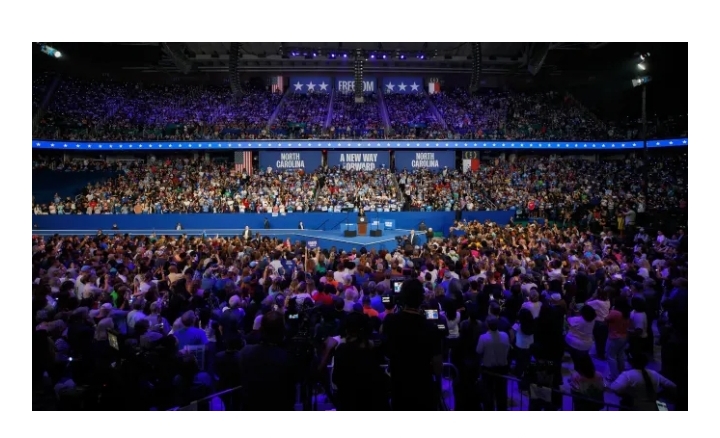CELEBRITY
Kamala Harris may be the first Democratic presidential nominee to win seniors since Al Gore

We’ve heard a lot about the groups of voters that Kamala Harris seems to be struggling with — or at least not doing as well as Joe Biden did with them four years ago. Yet, the vice president has a small national edge over Donald Trump. How is that possible?
It turns out that Harris is also doing particularly well for a Democrat among groups with whom recent presidential nominees of her party have fared poorly.
One such group is senior citizens. Harris may be the first Democrat to carry voters aged 65 and older since Al Gore in 2000.
Take a look at the recent national polls. The CNN/SSRS poll out this week found Harris leading the former president 50% to 46% among senior citizens. Our survey is not an outlier. The average poll has Harris up by 3 points over Trump among seniors.
This is a marked turnaround from before Biden dropped out of the race in July and from the final estimates from 2020. Both the polling average from earlier this year and the post-election findings from 2020 had Trump up by 4 points over Biden among voters who were 65 or over.
The fact that Harris is doing better with seniors than other Democrats before her isn’t the biggest surprise. Biden did considerably better with older voters in 2020 than Barack Obama did in 2012, despite a similar national performance among all voters.
Still, any inroads with seniors would come at a necessary time for Harris, who is struggling a bit — for a Democrat — among young voters in the average national poll.
While no campaign wants to lose voters, a trade of younger for older voters is potentially a good one for Harris. There are more senior citizens than adults under 30 in America.
Moreover, older Americans punch above their weight because they’re more likely to be registered to vote and to cast a ballot. Recent polling from The New York Times/Siena College put seniors at about 29% of the electorate, compared with only about 13% for voters under 30.
Although the exact math differs depending on the state, the general idea that older voters make up a much larger share of the electorate than younger voters is true in the swing states as well.
And the power of the older voting bloc compared with the youngest one is only growing. Back in 1980, for example, 22% of the electorate was under 30. Just 17% were seniors, according to estimates for the US Census Bureau. By 2000, seniors were a larger share (at 20%) than those under 30.
Of course, it is possible that the pre-election polling isn’t accurate. Four years ago, there were signs that older voters were shifting to become more Democratic. Trump would go on to win them, though by a smaller margin than one might have expected given the national vote margin.
The polling four years ago, however, suggested that Biden was doing better than the average Democrat among younger voters as well, which is very different from now. But, as it turned out, the polling overestimated Biden’s standing among most voting groups.
Interestingly, this potential age depolarization among the oldest and youngest segments of the electorate comes when we’re seeing racial depolarization as well. Trump is doing well for a Republican among Black and Hispanic voters, just as Harris is doing better than Biden was among White voters.
I mention the racial depolarization because the math is similar for Harris. Like with age demographics, she is losing support among groups of voters who make up a smaller share of the electorate (Black and Hispanic voters) and seems to be gaining with a bigger group (White voters).
That trade-off right now is working well enough for Harris in the polls. The question is whether it will continue to work for her or whether Trump’s inroads among younger, Black and Hispanic voters will overwhelm any gains Harris has had with White and older voters.
Regardless of what ends up happening, it does seem like there’s a good chance we see an electorate that is less divided among certain key demographics than we’re used to seeing.











